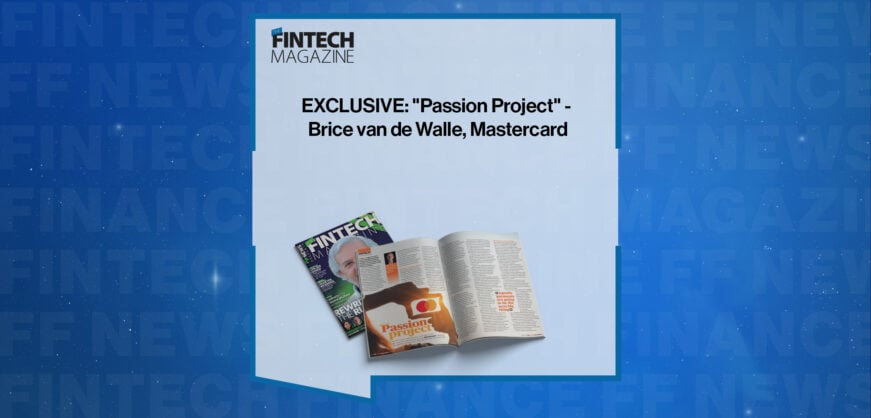Breaking News

What the Future of Insurance Looks Like
By Timofey Volkov, CEO of CryptoIns
The influence of technology on insurance has resulted in many industry standards we now take for granted such as the ability to insure a car for a few kilometres or days, get a discount on an insurance premium for living a healthy lifestyle, insure sports equipment for a short period of use, insure items purchased from an online store, and buy insurance plans over instant messenger.
Modern technologies allow insurance companies to more accurately assess their own risk, more actively resist fraud, set more precise rates for their services, and significantly reduce their costs.
InsurTech conquers the world
Insurance is a low profit margin business – if the total amount of paid claims and claims reserves plus the cost of doing business do not exceed revenues, then the company is doing well. Therefore, reducing expenses or losses by a fraction of a percent makes the insurance business more attractive and profitable. All innovations in InsurTech must aim to do exactly that. Creating a successful startup in this field requires a deep understanding of the insurance business and also a clear understanding of the issues insurance companies need to solve. Then it is necessary to make a convincing argument to get insurers to take your proposed solution seriously.
Despite the conservative nature of the insurance industry, InsurTech is considered one of the most rapidly growing innovation sectors. According to insurance broker Willis Towers Watson, $5.1 billion was invested in InsurTech startups related to life, and health insurance between the beginning of 2013 and the first half of 2018, and $4.2 billion was invested in property and liability related startups. The majority of investments in insurance startups have been in the U.S., which has accounted for 60 percent of capital, according to various sources. The largest European economies account for significantly less – the United Kingdom, Germany, and France account for approximately five percent each. China and India account for about four percent but are likely to substantially increase their insurance investments in the immediate future. It is certainly safe to assume that for China, where a $1 billion investment in InsurTech startup Zhong An was made in 2015. Today, Zhong An serves 450 million customers – an achievement any company would be overjoyed with. According to McKinsey, the main sectors for InsurTech startups are property and liability insurance (46 percent), health (33 percent), and life insurance (21 percent). And the main focus for business development in the industry is on the distribution process, including sales, pricing, claims and product development.
New technology is rapidly entering both traditional and new insurance niches, such as the cryptocurrency industry. Our platform, CryptoIns, allows users to insure their crypto-assets on exchanges and in wallets. It is the first online service for insuring cryptocurrency backed by a traditional insurance company. We insure traders’ funds on cryptocurrency exchanges, accepting insurance premiums and making claims settlements in cryptocurrency. For example, if a cryptocurrency exchange goes down and fails to come back online within 30 days, we reimburse our customers in accordance with the sums insured they paid for. This service is particularly promising as it is effectively the first attempt at supranational insurance, as it is equally easy to access and use in China, Europe, and Russia. Moreover, one can already purchase coverage for cryptocurrency funds on 15 different exchanges with nothing more than the help of a Telegram bot.
Blockchain – the future, but not the present
The development of InsurTech is moving in several directions at once, from the paperless office and electronic document management to the automation of routine processes using more complex technologies, and the valuation and monitoring of insured objects remotely. Interestingly enough, insurance companies seem to be in no rush to invest in blockchain technology despite many insurers being certain that at least some of their business processes will operate on blockchain within three to five years. B3i, an association of insurers and reinsurers, has already been established to explore the possibilities for blockchain in the industry. It was formed by over a dozen of the largest insurance companies, including Allianz, Liberty Mutual, Swiss Re and more. Generally, insurance companies expect blockchain technology to unlock a new level of transparency and efficiency.
AI and data analysis are the present
Insurers are much more eagerly implementing artificial intelligence. For example, AI and machine learning technologies are used to analyze claim documents, thus freeing up human resources to focus on more creative tasks. Artificial intelligence tools are gradually influencing many aspects of the “customer journey,” from searching for a product to purchasing it. And they will reshape the traditional service requirements, distribution channels, underwriting, and pricing models. Tools based on machine learning and chat-bot processing are particularly innovative in the insurance industry. All of this amounts to a significant reduction in operational expenses.
Other growth areas insurance companies are happy to allocate plenty of resources for are more precise categorization, the screening out of unprofitable clients, and attracting profitable customers. Artificial intelligence, big data, and data analytics technologies are essential in these areas because they enable the analysis of huge amounts of user data, including posts and publicly available images on social media platforms, website traffic history, travel, and shopping history, and more, resulting in more in-depth customer risk profiles. This makes it possible to generate custom premium quotes depending on the risk score of a particular customer. For example, the market already offers microinsurance for lower income populations, typically as a simple insurance product with limited coverage and regular low premium payments. Another promising sector is engagement innovation, which has the potential to strengthen the connection between customers and insurers, for example, by using lifestyle applications. The new, so-called “connected generation” has no objection to constantly being in touch with companies, creating more opportunities for insurers to offer their products for various specific situations. Insurance companies are becoming increasingly customer-centric, and technology aids that process.
The future is here
There are many innovative trends that might seem futuristic to a layperson but are already taking place. Drones are already being used for quick, remote assessments of large infrastructures, such as manufacturing plants. They also have the ability to monitor agricultural land, equipped with special cameras that take data on the condition of crops. Remotely piloted air vehicles are able to assess the risk of pest damage, disease or even natural disasters, as data processing software helps analyze the risk of flooding. Pilotless aircraft are also used to monitor the condition of pipelines in remote areas.
The Internet of Things and wearable devices also have the potential to significantly change the landscape of the market, as they enable the insurance of almost anything and can collect information on how a client uses an insured item. This information is essential for flexible, customized premiums. Customers will be able to pay for insurance that provides coverage only when they use a particular item. Special gadgets that monitor physical activity and provide indicators for the condition of one’s health will allow insurance companies to offer personalized rates for life insurance, for example.
New technologies are also rapidly developing in auto insurance, where telematics devices and special smartphone applications have been continuously developed and implemented for a few years now. These technologies provide insurers with more data, and machine learning analyzes this data to offer personalized products and services, including brand new or cheaper-than-standard-policy services. For example, careful drivers are able to receive a significant discount on their auto-insurance payments. Telematics also enables the accurate prediction of the nature and extent of damage in an accident even before accident images are received. Combined with details about the location and time of insured accidents, it makes it possible to counter insurance fraud.
In the end, the most important thing is that the interests of insurance companies match the interests of the customers, who want cheaper, more diverse and user-friendly services. Robots are actively being implemented to evaluate the quality of customer service. Software programs can already do more than just respond to certain keywords; they can analyze the performance of employees while engaging with customers using a wide variety of parameters. Unsurprisingly, assessing customer satisfaction with a certain service was perhaps the first step to take in automating the insurance industry.
As insurance services have become more accessible, simpler, and more convenient, insurance companies have reduced costs and increased their loyal customer base. Buying policies and receiving claims payments using nothing more than a smartphone is the direction the insurance industry is heading.
- EXCLUSIVE: “Passion Project” – Brice van de Walle, Mastercard in ‘The Fintech Magazine’ Read more
- FreedomPay Drives Global Merchant Innovation Read more
- FIS Brings AI-Powered Advancements to Seamless, Personalized Digital Banking Experiences Read more
- Citi Ventures Invests in BVNK to Power the Next Generation of Financial Infrastructure Read more
- Nearly Two-Thirds of Global Retailers Say Payment Method Flexibility Drives Revenue Growth, ACI Worldwide Survey Finds Read more













